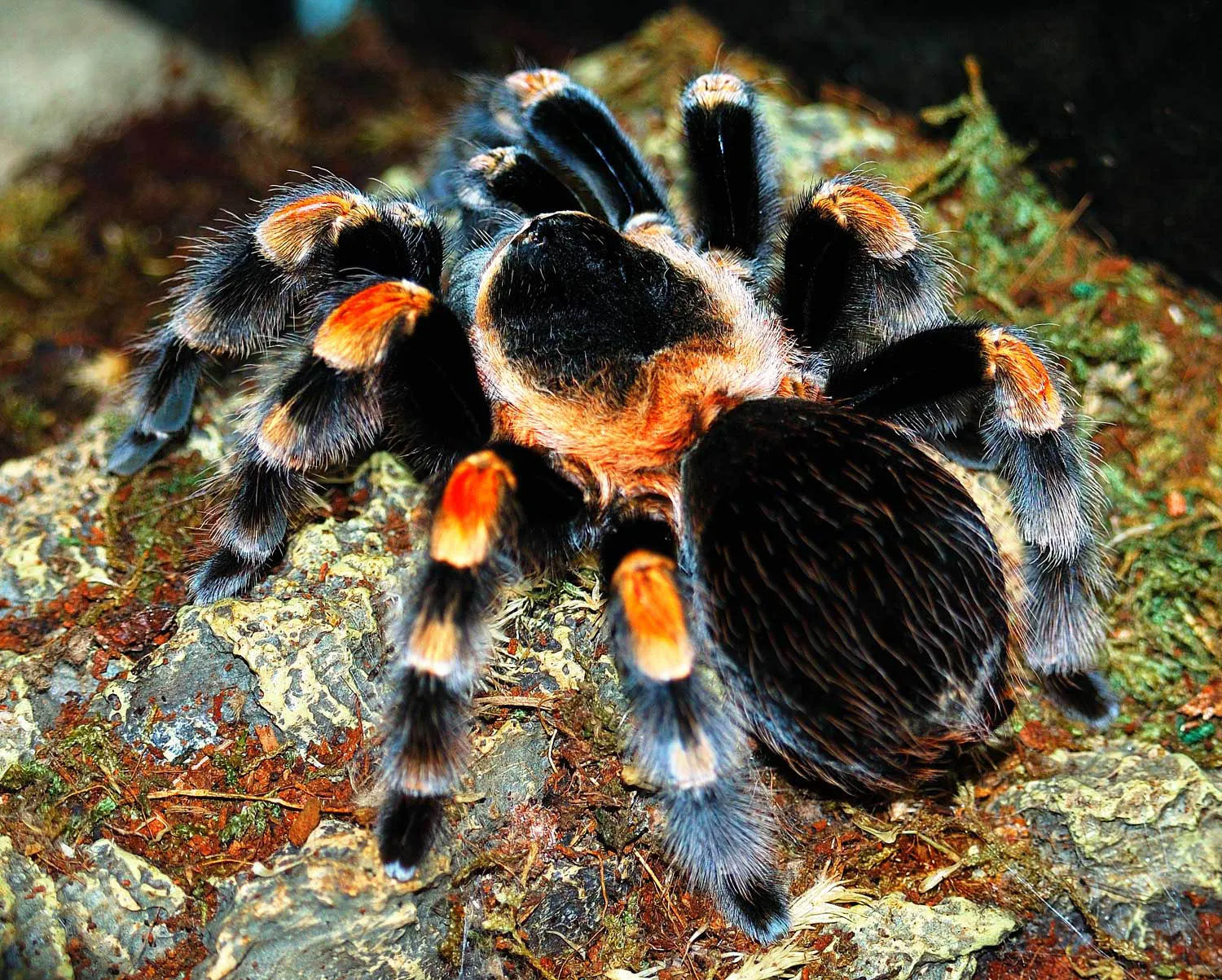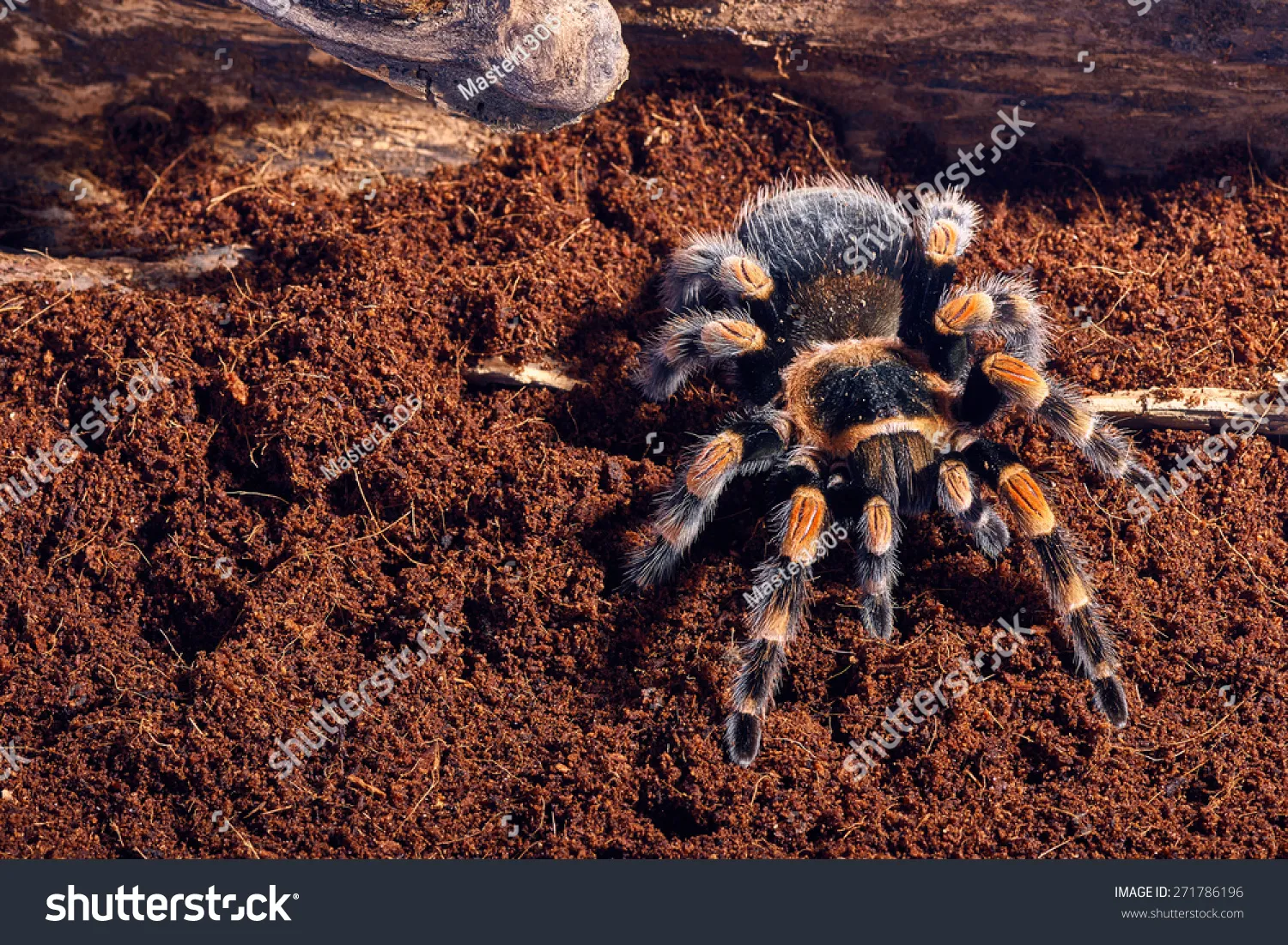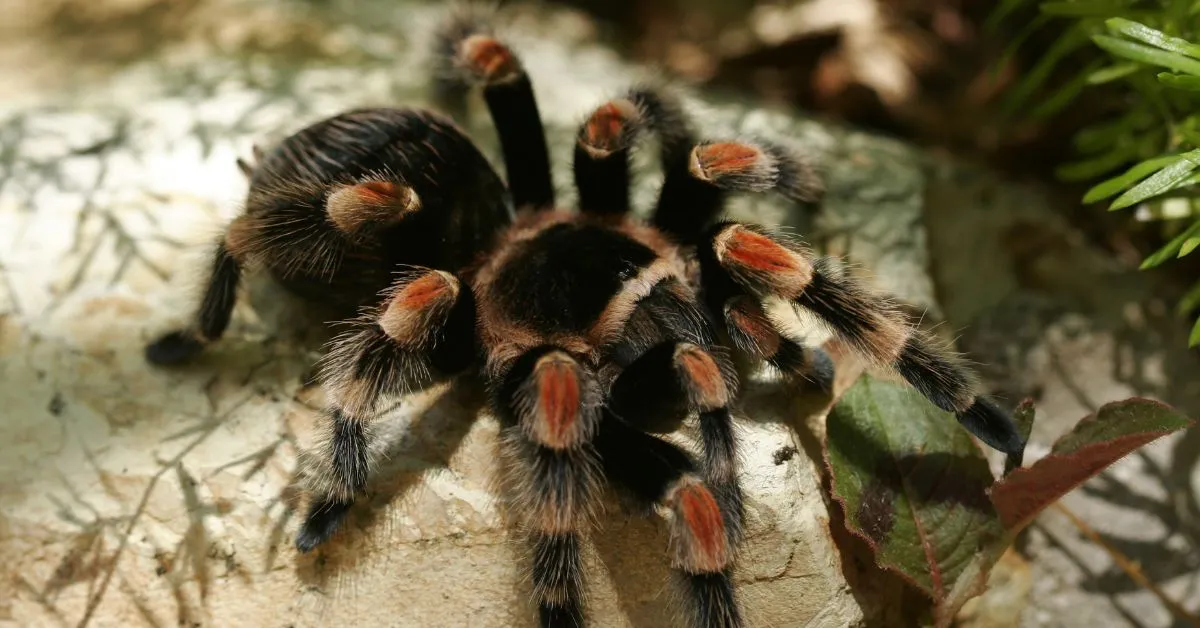What is a Mexican Pink Knee Tarantula (MPK)?
The Mexican Pink Knee Tarantula, scientifically known as Tliltocatl vagans (formerly Brachypelma klaasi), is a captivating and popular species among tarantula enthusiasts. Native to the Pacific coast of Mexico, this spider is known for its striking appearance, relatively docile temperament, and manageable size, making it a popular choice for both novice and experienced keepers. Their pinkish coloration on their leg joints, which gives them their common name, is one of the most eye-catching features. This species is a terrestrial tarantula, meaning it spends most of its time on the ground rather than climbing. They are relatively slow-moving and typically do not possess aggressive behaviors, although, like all tarantulas, they can bite if provoked. Understanding the basics of the MPK is the first step to providing proper care and enjoying their presence.
Origin and Habitat of MPK
Mexican Pink Knee Tarantulas are native to the tropical deciduous forests and scrublands of the Pacific coast of Mexico. Specifically, they are found in the states of Guerrero and Michoacán. In their natural habitat, they construct burrows in the ground, often under rocks, logs, or within the roots of trees. These burrows provide shelter from the sun, protection from predators, and a stable microclimate. The climate in their native regions is generally warm and humid, with distinct wet and dry seasons. The spiders thrive in this environment, hunting insects and other small creatures. Understanding their natural habitat is crucial for replicating suitable living conditions in captivity and ensuring their well-being. Creating a habitat that mimics their natural environment helps the tarantula feel secure and reduces stress.
Appearance and Physical Characteristics

The Mexican Pink Knee Tarantula is easily recognizable by its striking appearance. As the name suggests, the most distinctive feature is the pink coloration on the joints of their legs, particularly the knees. This pink hue contrasts beautifully with the dark brown or black coloration of the rest of their body and legs. Adults typically have a leg span ranging from 5 to 6 inches, with females generally being larger and more robust than males. Their bodies are covered in fine hairs, which help with sensory perception. The carapace, the upper shell of the cephalothorax, is usually a darker color, and the abdomen is covered with urticating hairs, which the spider can flick as a defense mechanism. The overall appearance of the MPK is quite appealing, making it a visually stunning addition to any collection, and a source of wonder for all who observe them.
Lifespan and Growth of MPK
The lifespan of a Mexican Pink Knee Tarantula can vary, but generally, they are long-lived creatures. Females typically live significantly longer than males. Female MPKs can live for 20 to 25 years or even longer under optimal conditions, while males usually live for only 5 to 10 years. Their growth rate depends on factors such as feeding frequency, temperature, and humidity. Like all tarantulas, they grow by molting, a process where they shed their exoskeleton to allow for growth. Younger tarantulas molt more frequently, sometimes every few months, while adults molt less often, perhaps once a year or even less. Each molt is a critical time for the tarantula, as they are vulnerable during this period. Providing a suitable environment and proper care is essential to support their growth and ensure their long lifespan.
MPK Temperament and Behavior
Mexican Pink Knee Tarantulas are generally known for their relatively docile temperament, which makes them a popular choice for beginners. They are typically not aggressive and are less likely to bite compared to some other tarantula species. However, it is essential to remember that they are still wild animals and should be handled with caution. When threatened, MPKs may flick urticating hairs from their abdomen as a defense mechanism. These hairs can cause skin irritation and discomfort if they come into contact with human skin. They are also capable of biting, although they usually resort to this as a last resort. Observing their behavior can provide valuable insight into their mood. Tarantulas may show defensive postures like rearing up or raising their front legs when they feel threatened. Understanding their behavior helps keepers to interact with them safely and provide them with a stress-free environment.
MPK: Diet and Feeding Guide

Mexican Pink Knee Tarantulas are carnivorous creatures, primarily feeding on insects in the wild. In captivity, their diet should consist of appropriately sized insects, such as crickets, mealworms, roaches, and occasionally, small vertebrates like pinkie mice (for adults). The frequency of feeding depends on the tarantula’s age and size. Spiderlings should be fed more often, while adult tarantulas can be fed once or twice a week. It is crucial to offer a varied diet to ensure they receive all the necessary nutrients. Always remove any uneaten food within 24 hours to prevent mold and mites from infesting the enclosure. Provide fresh water in a shallow dish at all times. Proper hydration is essential for their health, especially when molting. Observe your tarantula’s feeding habits; if it refuses food, it may be preparing to molt or could be experiencing other health issues. Careful attention to their diet is one of the most important aspects of MPK care.
MPK: Enclosure Requirements
Setting up the right enclosure is vital for the well-being of your Mexican Pink Knee Tarantula. The enclosure should be appropriately sized, allowing for enough space for the tarantula to move and feel secure. A good rule of thumb is to provide an enclosure that is at least twice the tarantula’s leg span in width and length and slightly taller than the leg span. A 5-10 gallon tank is usually suitable for adults. Substrate is essential; a mix of coco fiber, peat moss, and vermiculite provides a good balance of moisture retention and drainage. Provide a shallow water dish for fresh water at all times. Include a hide, such as a piece of cork bark or a half-log, where the tarantula can retreat and feel safe. Maintaining the correct temperature and humidity levels is also critical. The ideal temperature range is between 75°F and 85°F (24°C and 29°C), and humidity should be kept at around 60-70%. Regularly misting the enclosure or providing a water dish helps to maintain the right humidity levels.
MPK: Handling and Safety Tips
Handling a Mexican Pink Knee Tarantula should be approached with caution, even though they are relatively docile. It is generally recommended to avoid handling them unless necessary. If you must handle your tarantula, do so gently and slowly. Always sit or kneel close to the ground to minimize the distance if the tarantula falls. Avoid any sudden movements that could startle the spider. The tarantula can flick urticating hairs as a defense, so it is essential to avoid direct contact with your face and eyes. Wash your hands thoroughly after handling the tarantula or anything in the enclosure. Keep a safe distance from the enclosure if you feel uncomfortable or apprehensive. Always respect the tarantula’s space and understand its potential defenses. Remember that their primary instinct is to survive and defend themselves, therefore, respecting their boundaries is paramount to a successful and safe experience.
Common Health Issues in MPK

Mexican Pink Knee Tarantulas are generally hardy creatures, but they can still be susceptible to certain health issues. One of the most common problems is dehydration, which can be prevented by providing fresh water and maintaining appropriate humidity levels. Another common issue is mites, which can infest the enclosure and harm the tarantula. Regularly cleaning the enclosure and quarantining new substrate and insects can help prevent mite infestations. Sometimes, tarantulas can suffer from injuries during molting if the environment is not ideal. Ensuring proper humidity and a stress-free environment can minimize the risk of molting complications. Recognizing signs of illness early, such as lethargy, loss of appetite, or unusual behaviors, is crucial. If you notice any health concerns, it is best to consult with a veterinarian experienced in treating exotic animals to ensure your MPK receives the best care possible.
MPK as Pets, are they for you?
The Mexican Pink Knee Tarantula can make a rewarding pet for those interested in exotic animals and willing to provide the necessary care. They are relatively low-maintenance pets, especially compared to some other animals. However, they require a specific environment, regular feeding, and careful handling. Before getting an MPK, consider whether you are comfortable with insects and the idea of handling a spider. Researching and understanding their needs is essential. This species is a great choice for those who are new to tarantula keeping, as they are relatively docile and easy to care for. Ensure you can dedicate the time and resources to provide the correct housing, diet, and overall care for the long term. If you are prepared to meet these requirements, the Mexican Pink Knee Tarantula can provide a fascinating and enjoyable pet experience.
